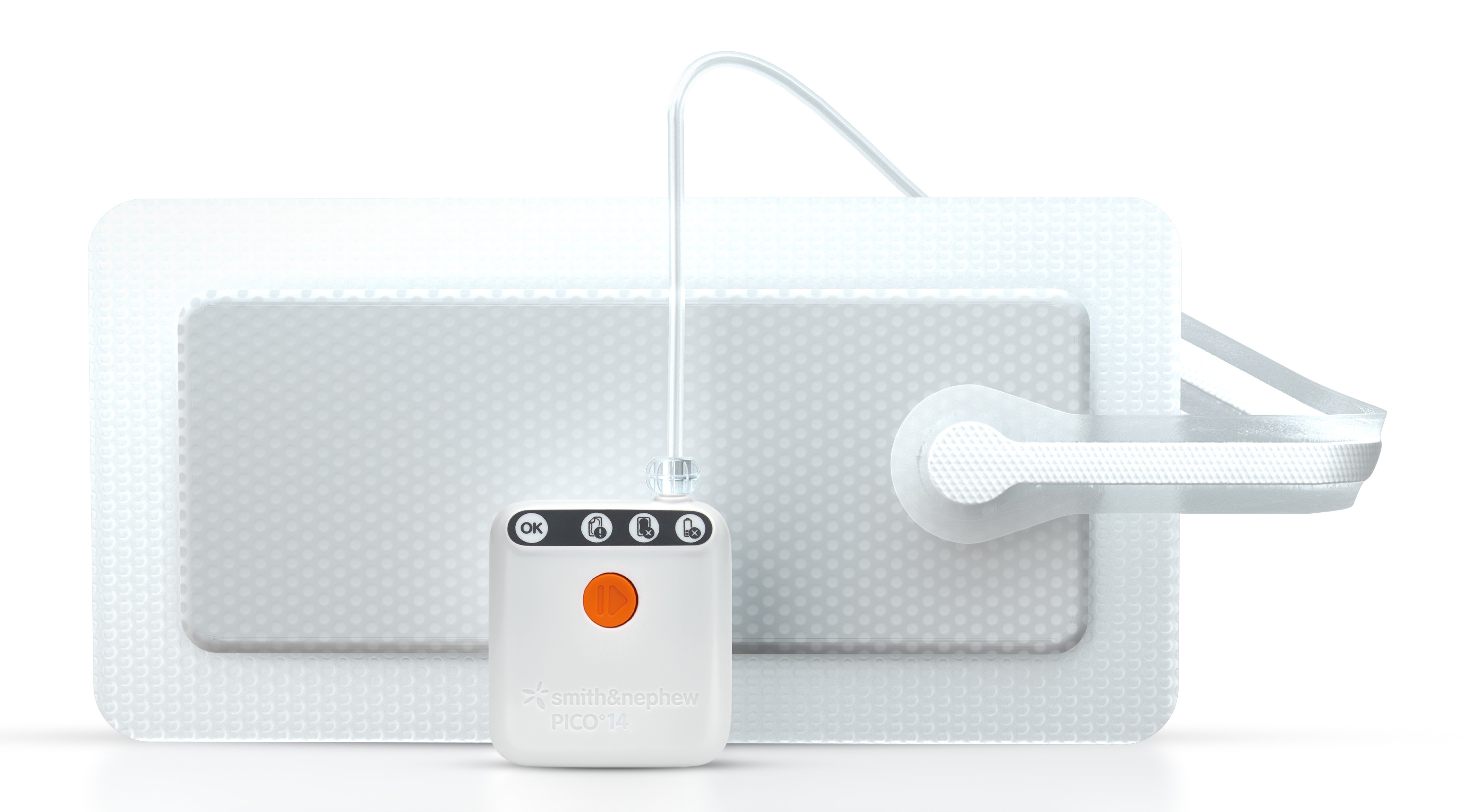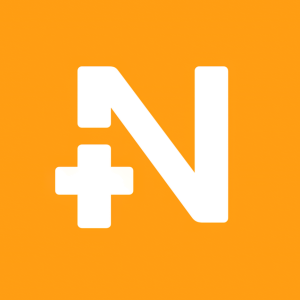Smith+Nephew comparative study1 shows PICO◊ sNPWT (-80 mmHg) delivers superior performance in relation to wound dehiscence and reduces healthcare costs across cardiovascular and orthopedic surgery versus PrevenaTM -125 mmHg sNPWT
Rhea-AI Summary
Smith+Nephew (NYSE:SNN) published a comparative real-world analysis of single-use negative pressure wound therapy (sNPWT) using >22,000 patients from the Premier PINC AI healthcare database. The study reports that PICO sNPWT (-80 mmHg) produced materially better outcomes versus Prevena -125 mmHg in orthopedic (17,000+ patients) and cardiovascular (5,000+ patients) surgery.
Key quantified findings: 57.8% and 63.9% relative reductions in wound dehiscence risk, shorter hospital length of stay (cardio 6.33 vs 6.86 days; ortho 2.43 vs 3.10 days), and index/30–90 day admission cost reductions ranging ~13%–22% (all p-values reported).
Positive
- Sample size >22,000 patients in real-world Premier PINC AI database
- Wound dehiscence −57.8% (cardiovascular) and −63.9% (orthopedic)
- Length of stay reductions: cardiovascular 6.33 vs 6.86 days, orthopedic 2.43 vs 3.10 days
- Admission cost reductions: cardiovascular ~10–13% and orthopedic ~22% at index and 30/90 days
Negative
- Observational study design using real-world database (Premier PINC AI) without randomized trial status
- Findings limited to cardiovascular and orthopedic surgical cohorts reported in the analysis
News Market Reaction 1 Alert
On the day this news was published, SNN gained 0.25%, reflecting a mild positive market reaction.
Data tracked by StockTitan Argus on the day of publication.
Smith+Nephew (LSE:SN, NYSE:SNN), the global medical technology company, today announces findings from a newly published, first-of-its-kind comparative study of single-use negative pressure wound therapy (sNPWT) devices in orthopedic and cardiovascular surgery.
Analyzing real-world data from over 22,000 patients in the Premier PINC AI™ Healthcare Database, the analysis reveals that prophylactic use of PICO sNPWT (-80 mmHg) significantly reduces the risk of wound dehiscence, hospital length of stay (LoS), and overall healthcare costs compared to the PrevenaTM -125 mmHg sNPWT device.

Smith + Nephew's PICO Single Use Negative Pressure Wound Therapy System
An estimated 313 million surgical procedures are performed worldwide each year, with the number continuing to rise.2 In the United States, surgical site infections (SSIs) occur in approximately
In relation to PrevenaTM sNPWT (-125mmHg), use of PICO sNPWT (-80mmHg) resulted in the following key study findings:
Cardiovascular Surgery (5,000+ patients)
57.8% relative reduction in wound dehiscence risk (P<0.01)9.1% relative reduction in LoS (6.33 days vs. 6.86 days) (P<0.0001)10.34% relative reduction in admission-related costs and13% lower expenditures within three months post-surgery (P<0.0001)
Orthopedic Surgery (17,000+ patients)
63.9% relative reduction in wound dehiscence incidence (p<0.05)29.7% relative reduction in LoS (2.43 days vs. 3.10 days) (p<0.0001)21.95% relative reduction in mean index admission cost and a21% reduction at 30- and 90-day post-surgery (p<0.001)
Substantial cost savings with PICO sNPWT
SSCs are associated with prolonged hospital stays, increased readmissions, and higher mortality risk, particularly in patients with comorbidities such as obesity, diabetes, and hypertension.7 This study shows that PICO sNPWT may contribute to reduced surgical site complications for at risk patients and improved health economic outcomes the hospital.
“The differences we are seeing likely relate to the PICO system and its dressing design, as well as the associated mechanisms of action that may contribute to improved clinical outcomes.” says Dr. Adam Wright, orthopedic surgeon and study co- author. “Using PICO sNPWT prophylactically on at-risk patients undergoing orthopedic or cardiovascular surgeries helps reduce SSCs, and consequently, strain on healthcare resources.”
Growing Body of Evidence
These findings complement the growing evidence supporting prophylactic use of incisional negative pressure wound therapy (iNPWT) across surgery. A recent meta-analysis presented at the International Consensus Meeting 2025 concluded that “The use of iNPWT is recommended to minimize the risk of SSI in adult patients with primarily closed surgical incisions after lower extremity/acetabular fracture surgery and joint arthroplasty of the hip and knee.”
These findings are aligned with the global recommendations including NICE4, WHO5 and the ACS/SIS6 guidelines, all of which recommend the use of iNPWT for the purpose of reducing the risk of SSI for at risk patients.
For more information about these studies, please visit: https://www.possiblewithpico.com/home
-ends-
Enquiries
Frida Wilhelmsson +46 (738) 499 429
Smith+Nephew frida.wilhelmsson@smith-nephew.com
About Smith+Nephew
Smith+Nephew is a portfolio medical technology company focused on the repair, regeneration and replacement of soft and hard tissue. We exist to restore people’s bodies and their self-belief by using technology to take the limits off living. We call this purpose ‘Life Unlimited’. Our 17,000 employees deliver this mission every day, making a difference to patients’ lives through the excellence of our product portfolio, and the invention and application of new technologies across our three global business units of Orthopaedics, Sports Medicine & ENT and Advanced Wound Management.
Founded in Hull, UK, in 1856, we now operate in around 100 countries and generated annual sales of
For more information about Smith+Nephew, please visit www.smith-nephew.com and follow us on X, LinkedIn, Instagram or Facebook.
Forward-looking statements
This document may contain forward-looking statements that may or may not prove accurate. For example, statements regarding expected revenue growth and trading profit margins, market trends and our product pipeline are forward-looking statements. Phrases such as "aim", "plan", "intend", "anticipate", "well-placed", "believe", "estimate", "expect", "target", "consider" and similar expressions are generally intended to identify forward-looking statements. Forward-looking statements involve known and unknown risks, uncertainties and other important factors that could cause actual results to differ materially from what is expressed or implied by the statements. For Smith+Nephew, these factors include: conflicts in Europe and the Middle East, economic and financial conditions in the markets we serve, especially those affecting healthcare providers, payers and customers; price levels for established and innovative medical devices; developments in medical technology; regulatory approvals, reimbursement decisions or other government actions; product defects or recalls or other problems with quality management systems or failure to comply with related regulations; litigation relating to patent or other claims; legal and financial compliance risks and related investigative, remedial or enforcement actions; disruption to our supply chain or operations or those of our suppliers; competition for qualified personnel; strategic actions, including acquisitions and disposals, our success in performing due diligence, valuing and integrating acquired businesses; disruption that may result from transactions or other changes we make in our business plans or organisation to adapt to market developments; relationships with healthcare professionals; reliance on information technology and cybersecurity; disruptions due to natural disasters, weather and climate change related events; changes in customer and other stakeholder sustainability expectations; changes in taxation regulations; effects of foreign exchange volatility; and numerous other matters that affect us or our markets, including those of a political, economic, business, competitive or reputational nature. Please refer to the documents that Smith+Nephew has filed with the U.S. Securities and Exchange Commission under the U.S. Securities Exchange Act of 1934, as amended, including Smith+Nephew's most recent annual report on Form 20-F, which is available on the SEC’s website at www. sec.gov, for a discussion of certain of these factors. Any forward-looking statement is based on information available to Smith+Nephew as of the date of the statement. All written or oral forward-looking statements attributable to Smith+Nephew are qualified by this caution. Smith+Nephew does not undertake any obligation to update or revise any forward-looking statement to reflect any change in circumstances or in Smith+Nephew's expectations.
◊ Trademark of Smith+Nephew. Certain marks registered in US Patent and Trademark Office.
TM All trademarks acknowledged
*Follow up to 30 days post discharge to establish complication levels post-surgery
1. Bashyal RK, Searle R, Nherera LM, Wright A. Effects of single-use negative pressure wound therapy on healthcare use: US analysis of a large claims database. Journal of Wound Care . 2025;34(8):555-562.
2. Meara JG, Leather AJM, Hagander L, et al. Global Surgery 2030: Evidence and solutions for achieving health, welfare, and economic development. The Lancet. Lancet Publishing Group. 2015;386(9993):569-624. doi:10.1016/S0140-6736(15)60160-X
3. CDC, Ncezid, DHQP. Surgical Site Infection Event (SSI). https://www.cdc.gov/nhsn/pdfs/ps-analysis-resources/ImportingProcedureData.pdf.
4. Surgical site infections: prevention and treatment NICE guideline. Published online 2019. Accessed September 9, 2022. www.nice.org.uk/guidance/MTG43.
5. Global Guidelines for the Prevention of Surgical Site Infection. World Health Organization; 2018.
6. Ban K, Minei J, Laronga C, et al. American College of Surgeons and Surgical Infection Society: Surgical Site Infection Guidelines, 2016 Update.; 2017.
7. Ciprandi, G et al. World Union of Wound Healing Societies (WUWHS) Consensus Document. Closed surgical incision management: understanding the role of NPWT. Wounds International, 2016.
8. 3rd Meeting International Consensus Meeting, May 8-10th. Istanbul, Turkey. www.icmortho.org








